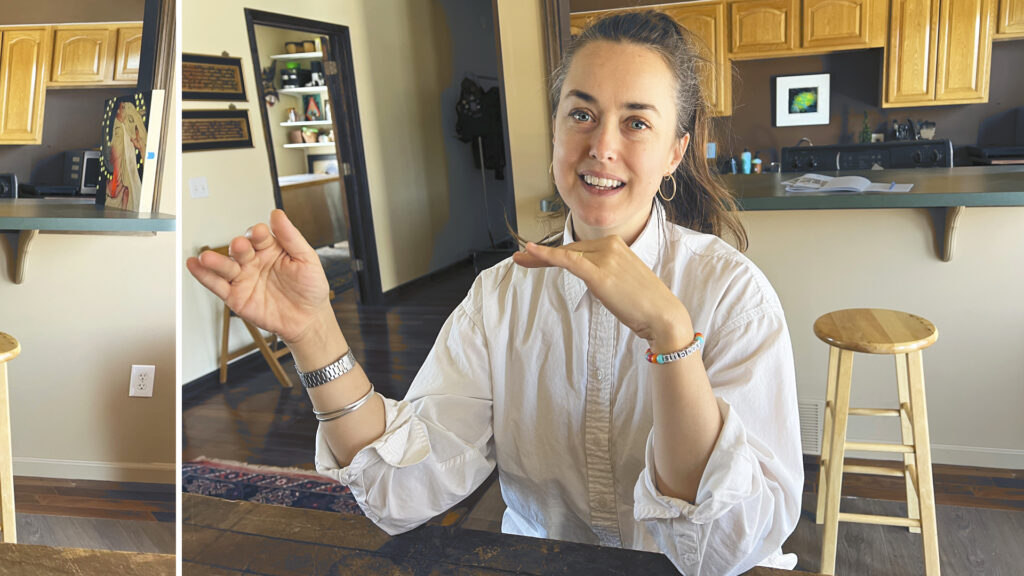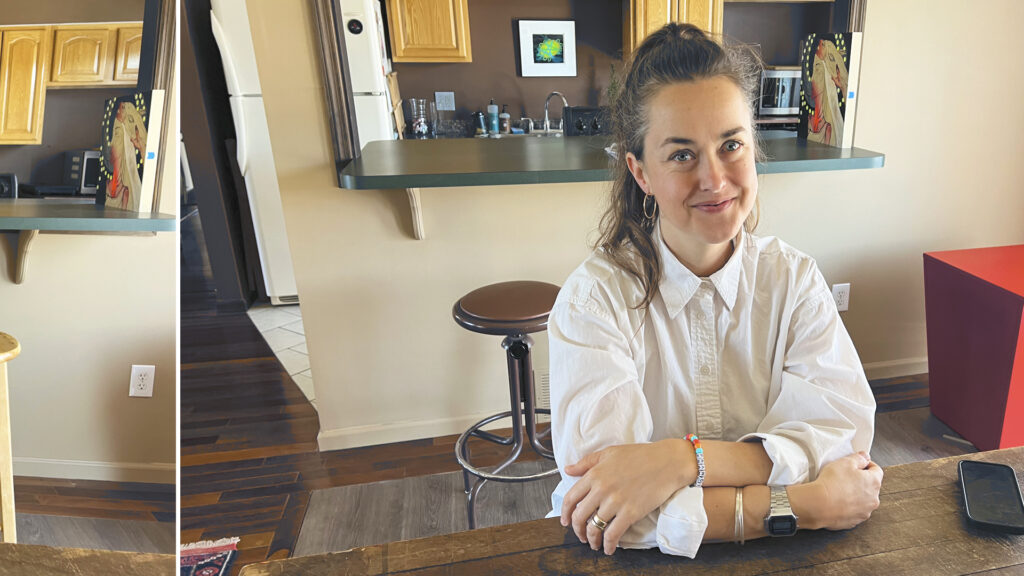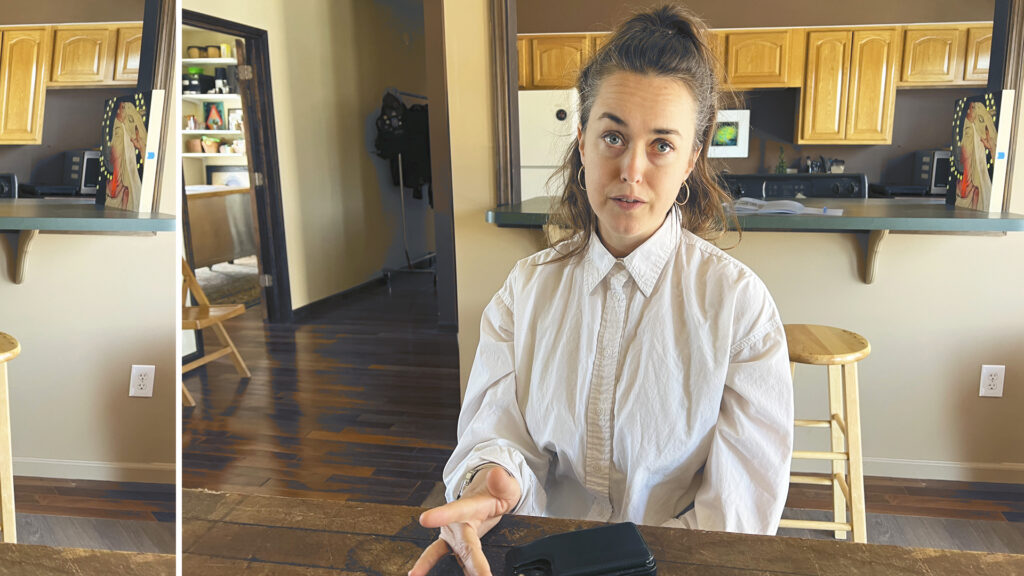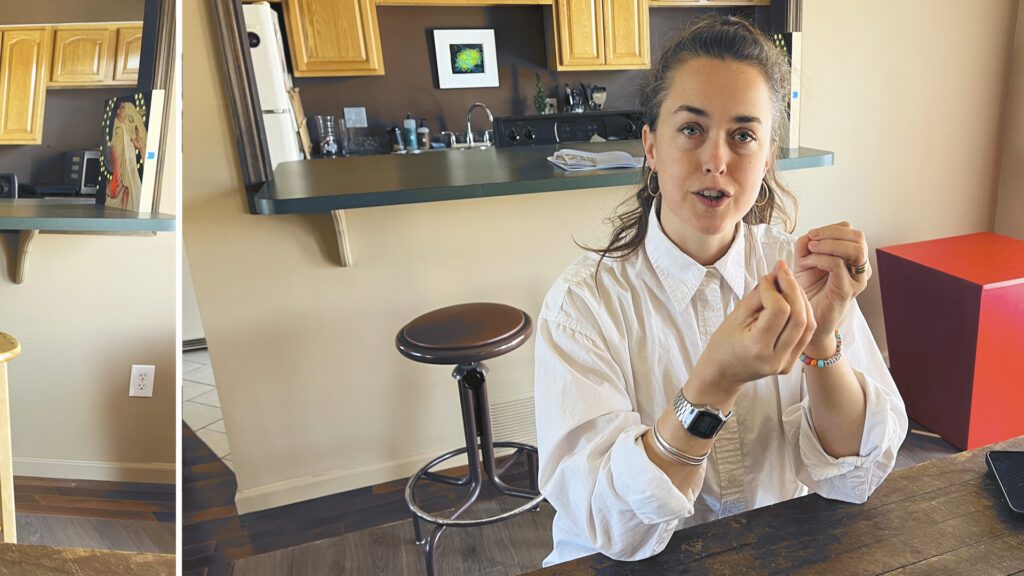Happenstantially I ran across an old friend recently at Jamel Mosely‘s Whiskey Pickle and as frequently happens at night in such places, a deep conversation ensued. This one was on the merits and challenges of AI’s impact on creativity. So good it was, I had to invite Elizabeth Quinn Gray, who is currently the Associate Director of the AI and Society Research Center at the University of Albany to have a chat over the kitchen table about where she sees the technology going and its impact on arts, culture and the human condition.

Please state your name, position and what you do. Feel free to include any relevant background info.
My name is Elizabeth Quinn Gray, my position is the Associate Director of the AI and Society Research Center at the University of Albany (AISRC). I’m currently finishing my doctorate, actually it’s really optimistic of me to say I’m finishing my doctorate…I’m in the dissertation writing stage of my doctorate in Philosophy. I also studied social justice theory.
As for my background, I studied at UAlbany, then started a school in Ecuador where I was asked to help found the Global Institute for Health and Human Rights as Assistant Director. Following that, I co-founded a Montessori school in Albany. After which, I was Assistant Dean at the College of Emergency Preparedness for Homeland Security and Cyber Security at SUNY when that was starting and then participated in a variety of startup projects at the Provost Office there (SUNY) as well.

What exactly is the purpose of AISRC?
AISRC has a range of five different themes that we work on: human resilience, human solidarity, human connection, human imagination and human flourishing. In each of them, the idea is to look at those things which are essentially human and / or have to do with the human condition, then determine how we can leverage AI in order to support humancentric activity while also protecting those things against the undue influence of the technology.

There is a lot of anxiety in the creative class about the impacts of AI. Maybe you could give us some hope for the future of human creativity…
I understand the initial reaction to people feeling fearful about the ways in which as AI is better able to, you know, massive air quotes here CREATE. There’s this fear that it will undercut or replace human creativity. My perspective on it is that there’s still necessarily a human creator in these scenarios. It is the case that AI can do some of the work for example, graphic design. But there still needs to be somebody who creates the concept for what the graphic should be. What makes it interesting is that somebody has an idea that they wanted to create a specified image. It’s bizarre and can be sort of disturbing and concerning, but I think that historically there’s always been these moments where new technologies or artistic tools have become available. Each time humans take the tools and find the path to make art while showing the mind of the creator. Art is not merely the visual or the verbal representation of a thing.
I think it’s going to actually be really fun and interesting to see what kind of art comes out through AI generated forms of creative arts because it just offers a new tool that people can play in. Then there’s an opportunity that sometimes is overlooked in areas like equity, inclusivity and expression. For example, historically in order to paint, you had to have access to paint. Originally only a really small group of people who had that access because you had to have like a chemist that could hand mix it an access to the minerals and then they would have to like make the paints and then, you know, if you were one of those lucky people, then you might become a painter. Eventually the paints became available in tubes that anybody could buy, and then everybody thought, oh no, now that everybody can paint, it’s going to make painting meaningless. But no, in fact, it just gave more people access to the medium. Then the caliber of painting, the expectations of what it meant to paint changed because there were all of these new artists in the field that were painting. I think that some similar things are already happening with AI. I think it just opens the field up for more art, more creation rather than narrowing the field.

In what way’s do you see the creative class having a critical contribution to the ongoing dialog?
Creativity and the creative arts are critical to human identity. There are opportunities and there are also serious challenges or threats. As you alluded to previously, there are the ones who hold the power and hold the purse and for the most part, that is not the creatives. On the other hand, it’s the creatives who hold power in wisdom and improvisation. So we have to figure it out how to align the money with that wisdom. This hasn’t been figured out yet in many respects. With the AISRC, we don’t want to invite in the humanists and the social scientists and the artists and other creatives to the AI discussion. We want the humanist, the social scientists, the creatives and the artists to lead the discussion, to identify those things that we need to be paying attention to, to understand what matters in order to know how to protect what matters. How do you engage with questions of art and creativity? Questions of ethics and of social impact can’t be an afterthought. Again, it’s the creatives that have that power and wisdom that those in positions of formal authoritative structural power don’t necessarily have. We can benefit from giving those minds a seat at the table at the outset, as all of this is unfolding.

Do you have anything to offer folks to help them engage in the ongoing dialog about AI and its ongoing impact?
One of the first things that we did when we started the AI and Society Research Center was to partner up with the New York State Writers Institute (EDITORS NOTE: the most recent installments included conversations with Author’s Laila Lalami and Gary Rivlin) to develop an AI and Society Conversation Series. Through this partnership we bring in authors who are working either directly or indirectly on questions related to AI technologies. Some are journalists, some are novelists who are just interested in questions of surveillance or creativity or any number of related topics. Some are pro AI, some are the skeptics that are questioning and concerned. The idea is to create a series that is fiction and nonfiction. Including play rights, filmmakers and others who are grappling with these questions in their in their particular formats. These are public events that are open to the public.
So part of what the AI in Society Conversation Series is doing is grappling with both the opportunities and the threats. We’re also looking at with this from a research perspective. So for those five themes that I mentioned earlier…in what ways can we leverage these emerging tools and technologies in order to further the things that we care about? How do we leverage AI as a tool to to support and enhance those things that we care about? And based on what we care about, based on what are what we want to value about what it means to be human, how do we protect against the threats? And finally, who even is the we?
Incidentally, I was joking that finally they are asking the philosophers what we think because, you know, philosophers of mind have asked questions about what it means to be an independent generative thinker for ever. Questions of ethics or questions of trust or explainability. These are what philosophers think about. Now suddenly there is not just a commercial but a societal, humancentric reason to be thinking about these things. I think we can look at it in the same way with arts and creativity. We have an opportunity for those who have been doing this, who have that in their nature, to lead and to have a hand in shaping the future of the technology. At it’s core, that is our hope with the research center.